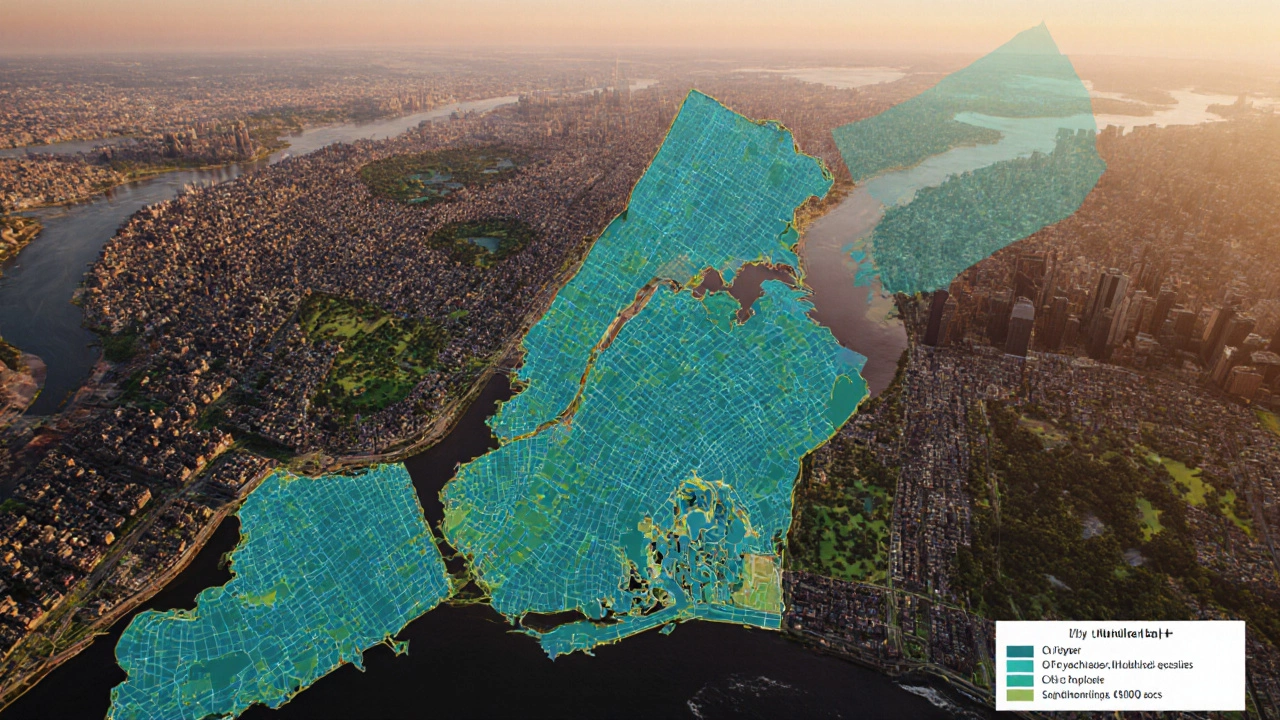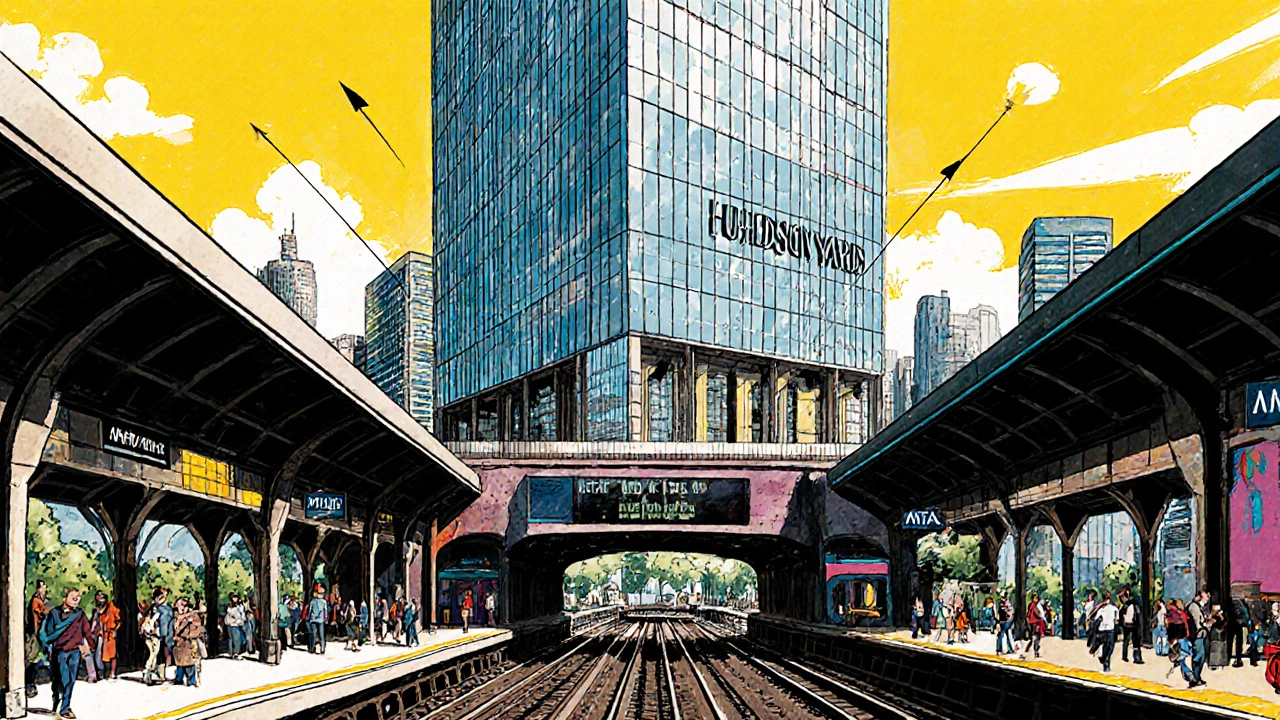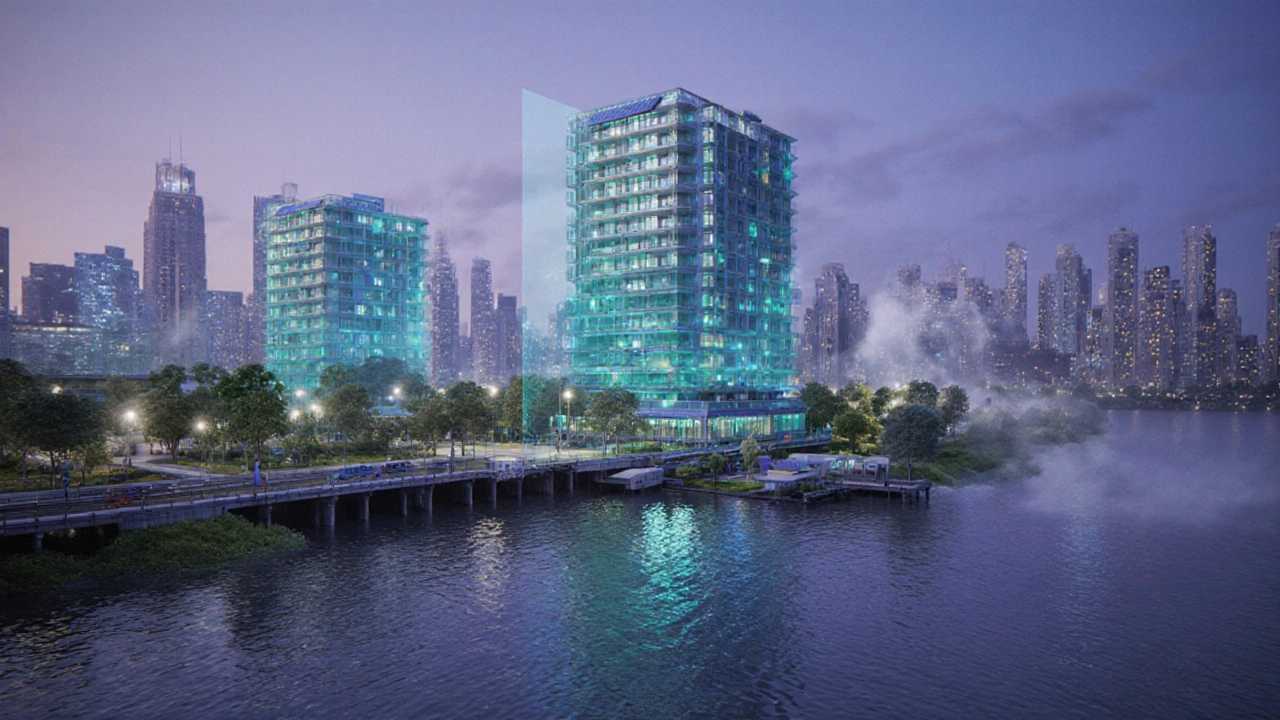Who Is the Largest Landowner in NYC?

Oct, 8 2025
NYC Land Ownership Comparison Tool
City of New York
6,300 acresParks, streets, public housing, civic buildings
MTA
2,300 acresRail corridors, stations, air rights
Catholic Archdiocese
~220 acresChurches, schools, office buildings
Trinity Church
~200 acresCommercial towers, luxury condos
City of New York dominates land ownership with over 6,300 acres, primarily from public works, parks, and housing. MTA follows with 2,300 acres, mostly rail corridors and air rights. Private trusts like the Catholic Archdiocese and Trinity Church hold significant parcels in prime locations.
Understanding land ownership helps predict urban development trends and assess how public vs. private interests shape the city.
Quick Takeaways
- The City of New York holds the title of the largest landowner NYC, controlling roughly 6,300 acres (about 28% of the boroughs' land).
- The Metropolitan Transportation Authority (MTA) follows, with about 2,300 acres tied to rail corridors and stations.
- The Catholic Archdiocese of New York and historic trusts such as Trinity Church each own over 200 acres of prime Manhattan real estate.
- Public ownership shapes park space, public housing, and infrastructure, while private landlords focus on commercial and luxury residential projects.
- Understanding who owns what helps investors, planners, and residents anticipate future development patterns.
When you walk through Manhattan or peek at a borough map, it’s easy to assume that private developers dominate the skyline. In reality, the public sector owns the biggest slice of the pie. Below we unpack who holds the most land in New York City, how that land is used, and why the ownership landscape matters for anyone who lives, works, or invests in the city.
Defining the Biggest Owner
City of New York is a municipal government entity that owns, manages, and leases a wide variety of properties across all five boroughs. Its holdings include streets, parks, public housing, municipal buildings, and civic infrastructure. When you add up every parcel recorded in the city’s land database, the total comes to roughly 6,300 acres. That translates to about one‑quarter of the total land area of the five boroughs combined.
How the City Accumulated Its Portfolio
The city’s landbank grew through three main channels:
- Public works and streets: Every city block’s street right‑of‑way belongs to the municipality.
- Parks and open space: The Parks Department, established in 1884, now oversees more than 30,000 acres statewide, with about 2,000 acres inside the city limits.
- Public housing and civic buildings: The NYC Housing Authority (NYCHA) alone manages over 7 million square feet of residential space across 30,000 units.
This mix of functional land means the city isn’t just a landlord-it’s the backbone of the city’s everyday life.

Who Comes in Second? The MTA’s Rail Real Estate
Metropolitan Transportation Authority is a public‑benefit corporation that operates subways, commuter rail, and bridges. It controls about 2,300 acres of land, primarily along rail corridors and station footprints. While the MTA doesn’t own streets, its parcels include air rights above stations, yards, and the extensive right‑of‑way that threads through Manhattan, Queens, and the Bronx.
These assets are strategic: the MTA can sell or lease air rights to developers, as seen with the Hudson Yards mega‑project, generating revenue that funds transit improvements.
Private Heavyweights: Archdiocese, Trinity Church, and Legacy Trusts
Among private entities, two historic institutions dominate:
- Catholic Archdiocese of New York holds roughly 220 acres of prime Manhattan real estate, including the iconic St. Patrick’s Cathedral and surrounding parcels that generate steady rental income.
- Trinity Church (often called the “Trinity Real Estate Trust”) controls more than 200 acres in lower Manhattan, acquired through centuries‑old land grants. Its portfolio now includes office towers, luxury condos, and retail spaces.
Both institutions reinvest lease revenue into charitable programs and maintenance of historic properties, blending community impact with financial sustainability.
Comparing the Top Five Landowners
| Owner | Acreage (approx.) | Key Asset Types | Primary Use | Strategic Intent |
|---|---|---|---|---|
| City of New York | 6,300 | Parks, streets, civic buildings, public housing | Public service & community space | Maintain infrastructure, generate lease revenue |
| Metropolitan Transportation Authority | 2,300 | Rail corridors, stations, air rights | Transit operations & development rights | Fund capital projects, leverage air rights |
| Catholic Archdiocese of New York | ~220 | Churches, schools, office buildings | Faith‑based services & income generation | Support ministries, preserve historic sites |
| Trinity Church (Real Estate Trust) | ~200 | Commercial towers, luxury condos | Investment & community outreach | Maximize returns while funding charitable work |
| Private Developers (e.g., Extell, Related) | ~150 (combined) | High‑rise condos, office parks | Profit‑driven development | Expand premium real estate supply |

Why Ownership Matters to You
Knowing who controls land helps you anticipate how neighborhoods might change. Public owners tend to prioritize community amenities, affordable housing, and long‑term stability. Private trusts often look for higher rents or redevelopment, which can shift the character of a block.
Investors track these owners to gauge market supply. For instance, when the city releases surplus parcels for sale, it can flood the market with new opportunities. Conversely, when the MTA sells air rights, developers scramble for those high‑value spots, driving up prices.
Future Trends: How the Landscape Could Shift
Three forces could reshuffle the land‑ownership hierarchy in the next decade:
- Climate‑resilient zoning: Rising sea levels may force the city to repurpose waterfront parcels, potentially selling or leasing them for resilient development.
- Public‑private partnership (PPP) models: The city and MTA are exploring joint ventures to develop station‑adjacent housing, blending public oversight with private capital.
- Tax‑increment financing (TIF): Expanding TIF districts could let private developers fund infrastructure in exchange for future tax benefits, nudging ownership toward mixed‑use projects.
Staying aware of these shifts lets residents voice preferences, and helps investors time their moves.
Frequently Asked Questions
Which entity owns the most land in Manhattan specifically?
The City of New York holds the greatest amount of Manhattan land, primarily through streets, parks, and public facilities, totaling roughly 2,800 acres within the borough.
How does the MTA generate revenue from its land holdings?
The MTA leases air rights above stations, sells development rights, and rents out yard space for commercial use. Notable examples include the Hudson Yards project and the East Side Access air‑right sale.
Can private individuals buy land directly from the City of New York?
Yes, the city periodically offers surplus parcels through public auctions or sealed‑bid sales, often requiring developers to meet affordable‑housing or public‑benefit clauses.
Why do historic trusts like Trinity Church still own so much land?
Centuries‑old land grants, coupled with prudent reinvestment of lease income, have allowed these trusts to retain and grow their portfolios while funding charitable missions.
What impact does large public land ownership have on affordable housing?
Public owners can mandate inclusionary zoning or set aside units for low‑income households when they lease or sell land, directly influencing the city’s affordable‑housing supply.